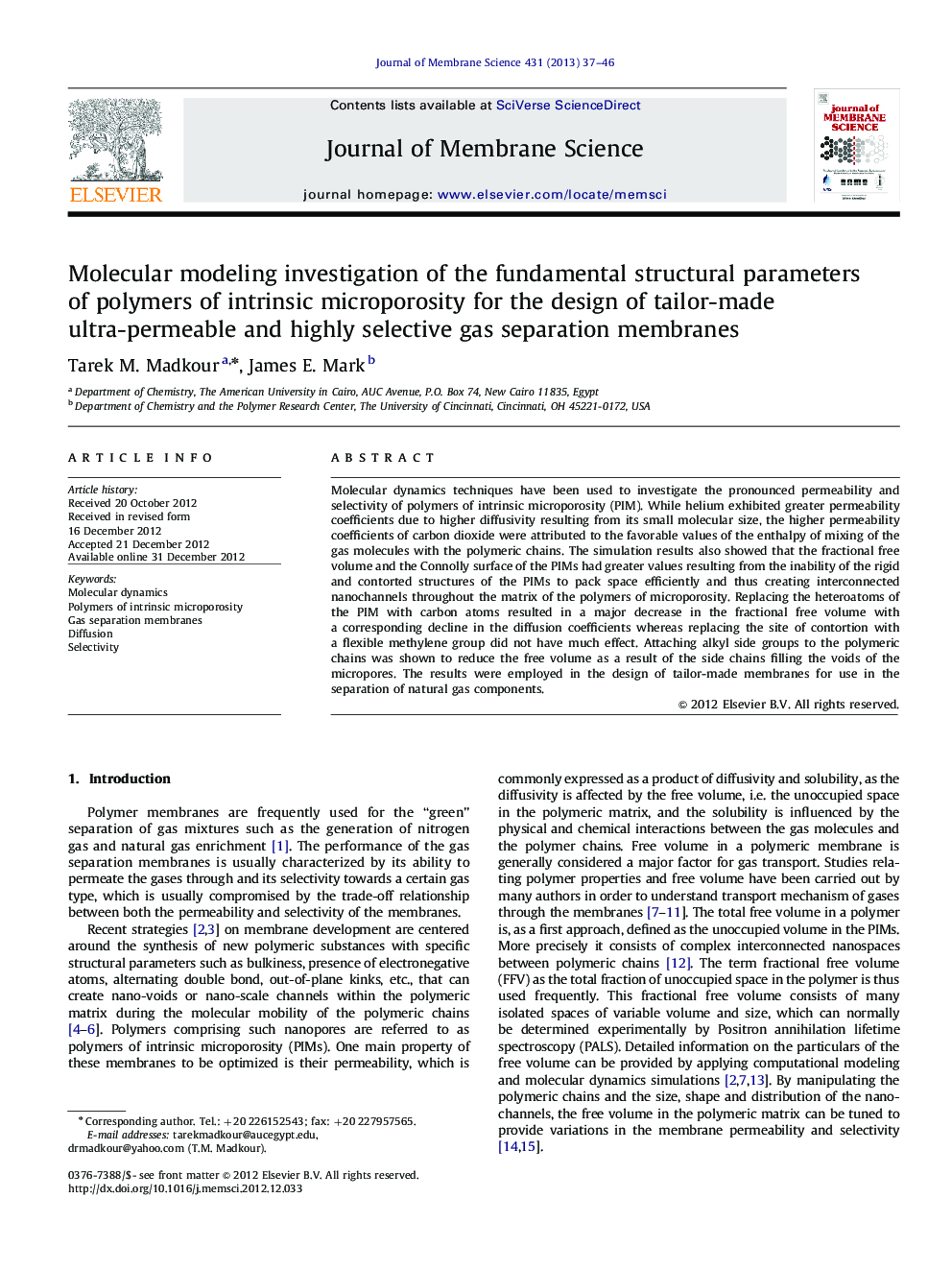| Article ID | Journal | Published Year | Pages | File Type |
|---|---|---|---|---|
| 634373 | Journal of Membrane Science | 2013 | 10 Pages |
Molecular dynamics techniques have been used to investigate the pronounced permeability and selectivity of polymers of intrinsic microporosity (PIM). While helium exhibited greater permeability coefficients due to higher diffusivity resulting from its small molecular size, the higher permeability coefficients of carbon dioxide were attributed to the favorable values of the enthalpy of mixing of the gas molecules with the polymeric chains. The simulation results also showed that the fractional free volume and the Connolly surface of the PIMs had greater values resulting from the inability of the rigid and contorted structures of the PIMs to pack space efficiently and thus creating interconnected nanochannels throughout the matrix of the polymers of microporosity. Replacing the heteroatoms of the PIM with carbon atoms resulted in a major decrease in the fractional free volume with a corresponding decline in the diffusion coefficients whereas replacing the site of contortion with a flexible methylene group did not have much effect. Attaching alkyl side groups to the polymeric chains was shown to reduce the free volume as a result of the side chains filling the voids of the micropores. The results were employed in the design of tailor-made membranes for use in the separation of natural gas components.
Graphical abstractFigure optionsDownload full-size imageDownload high-quality image (675 K)Download as PowerPoint slideHighlights► Molecular dynamics assessed permeability of polymers' of intrinsic microporosity. ► Large free volume is a result of structures' inability to pack space efficiently. ► High permeability of carbon dioxide was due to favorable enthalpic interactions. ► Replacing PIM heteroatoms with carbon atoms decreased the fractional free volume. ► Attached alkyl side chains filled the micropores voids and reduced the free volume.
